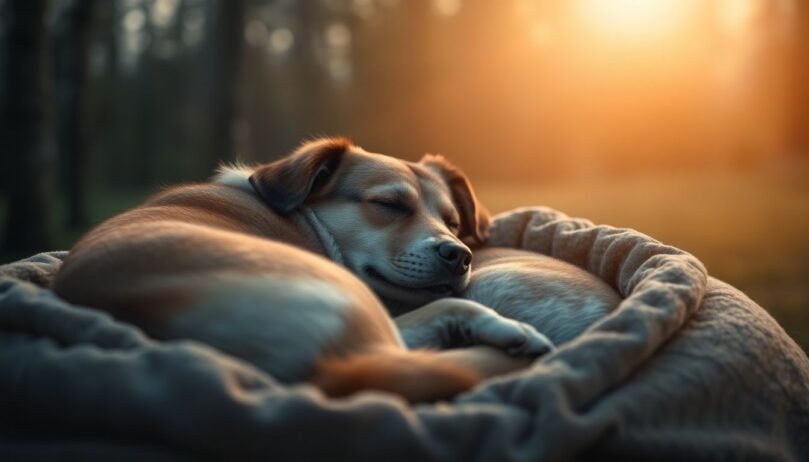Do Dogs Dream
- 10 January 2025
- BuyAPet Editorial Team
- All Dogs
Do Dogs Dream: Unlocking the Secrets of Canine Slumber
Do our dogs dream like we do? Here’s a clear look at canine sleep stages, the signs of dreaming, what those dreams might contain, and how to support better rest.
Understanding Canine Sleep Cycles
Stages: REM & non‑REM
Dogs move from non‑REM (light to deep sleep) into REM, the stage most associated with dreaming—often with irregular breathing and eye movements.
How dogs differ from humans
A dog’s full sleep cycle is about 20 minutes (vs. ~90 minutes in humans), and most dogs sleep 12–14 hours daily depending on age, breed, and activity.
The Science Behind Canine Dreaming
Brainwave evidence
EEG studies show brain activity in canine REM that resembles human REM, supporting dream‑like processing.
Physiological signs
- Muscle twitches: Legs or whiskers may flick as if running.
- Vocalisations: Soft barks or whimpers.
- Rapid eye movements: Eyes dart beneath closed lids.
Interpreting Canine Dreams
Behaviour clues
- Whimpering may reflect challenge or stress in a dream.
- Barking can suggest excitement, play, or alarm.
- Paw paddling often hints at chasing or running scenes.
Common themes
- Playing fetch or training games
- Social interactions with people and dogs
- Exploring favourite routes or new environments
How to Support Restful Sleep
- Comfortable space: Quiet, secure area with supportive bedding.
- Address disruptions: Manage anxiety, pain, or medical issues with your vet’s help.
- Good nutrition & hydration: Balanced diet and fresh water support quality sleep.
- Daytime fulfillment: Age‑appropriate exercise and mental enrichment make rest easier at night.
FAQs
Do dogs actually dream?
Evidence from sleep studies suggests they do. REM in dogs shows brain activity similar to humans, and behaviours match dream‑like scenes.
Why does my dog twitch or bark in sleep?
Those are typical REM signs and usually harmless. Avoid waking unless they seem distressed or unsafe.
How can I help my dog sleep better?
Provide a calm sleep area, consistent routine, daytime play, and speak with your vet about pain or anxiety.
Is sleepwalking or night terrors a thing in dogs?
True sleepwalking is rare. If your dog appears panicked or disoriented at night, consult your veterinarian.
This article is educational and not a substitute for professional veterinary advice. If sleep changes are sudden or severe, contact your veterinarian.
